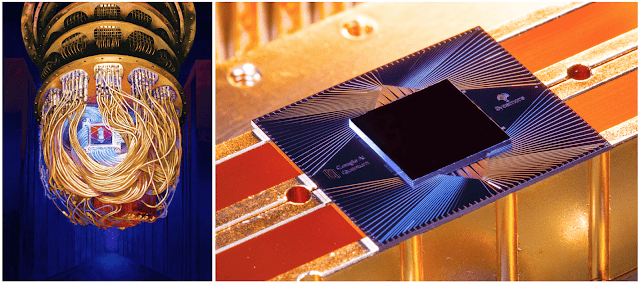Google’s team of researchers have claimed in a paper published in scientific journal ‘Nature’ that they had attained what’s called as “quantum supremacy” for the first time in their super-computing effort.
Google quantum supremacy is indeed a major milestone because it means having the ability of using quantum computers to solve problems that current technology can’t even start to attempt.
According to the paper, Google’s 53-bit quantum computer called ‘Sycamore’, took a mere 200 seconds to perform a calculation that would have taken otherwise taken the world’s fastest supercomputer 10,000 years to complete.

Here’s what Google said on its official AI blog:
It’s comprised of a two-dimensional grid where each qubit is connected to four other qubits. As a consequence, the chip has enough connectivity that the qubit states quickly interact throughout the entire processor, making the overall state impossible to emulate efficiently with a classical computer.
The success of the quantum supremacy experiment was due to our improved two-qubit gates with enhanced parallelism that reliably achieve record performance, even when operating many gates simultaneously. We achieved this performance using a new type of control knob that is able to turn off interactions between neighboring qubits. This greatly reduces the errors in such a multi-connected qubit system. We made further performance gains by optimizing the chip design to lower crosstalk, and by developing new control calibrations that avoid qubit defects.
Applications
The Sycamore quantum computer is fully programmable and can run general-purpose quantum algorithms. Since achieving quantum supremacy results last spring, the Google team has been working on near-term applications, including quantum physics simulation and quantum chemistry, as well as new applications in generative machine learning, among other areas.
So What’s Next?
Google said it had two main objectives going forward. Both were towards finding valuable applications in quantum computing.
It will, in the future, make its supremacy-class processors available to collaborators and academic researchers, as well as companies that are interested in developing algorithms and searching for applications for today’s NISQ processors.
It will also invest in team and technology to build a fault-tolerant quantum computer as quickly as possible. Such a device promises a number of valuable applications, like for example, helping to design new materials — lightweight batteries for cars and airplanes, new catalysts that can produce fertilizer more efficiently and more effective medicines.
Image Credit: Google
